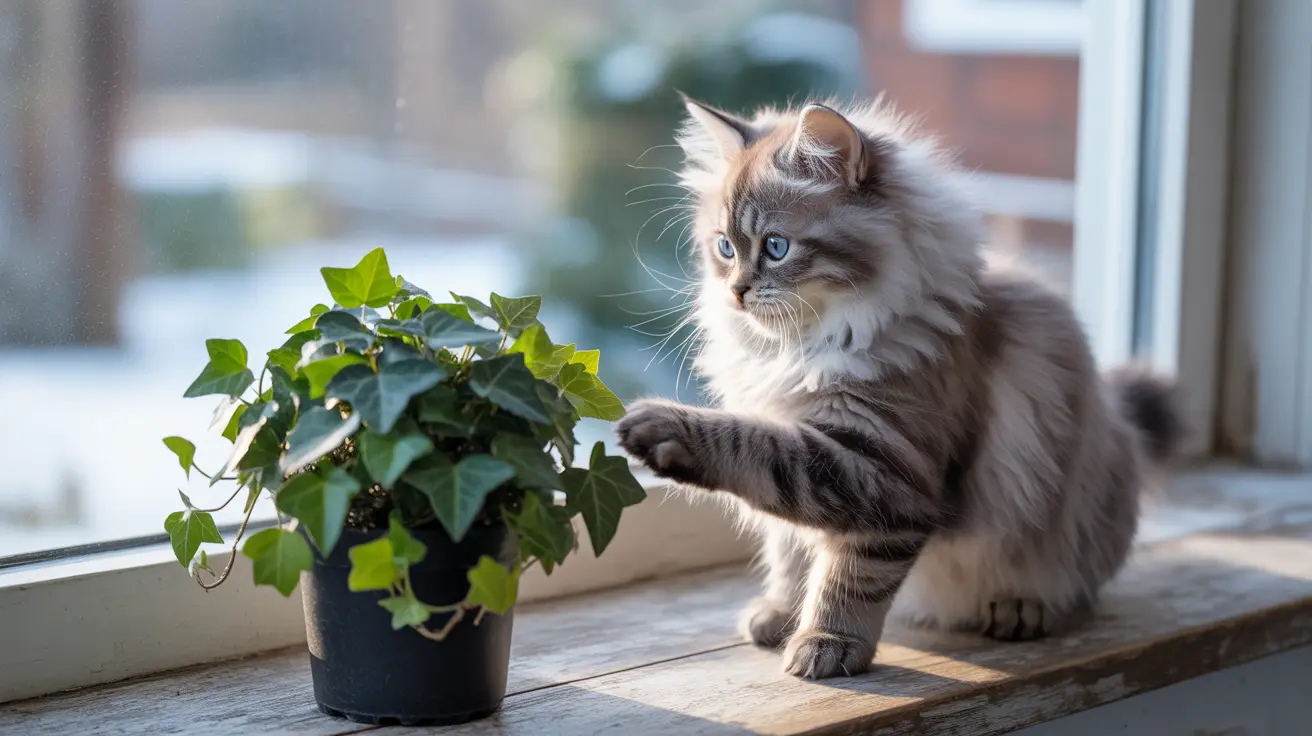For cat owners, understanding which plants pose risks to their feline friends is crucial for maintaining a safe home environment. Ivy plants, particularly common varieties like English ivy and Devil's ivy, can be dangerous to cats when ingested or even touched. This comprehensive guide explores the risks associated with ivy plants, helping you identify toxic species and take appropriate action if exposure occurs.
Understanding Ivy Toxicity in Cats
Many popular ivy varieties contain harmful compounds that can cause serious health issues in cats. English ivy (Hedera helix), for instance, contains triterpenoid saponins and polyacetylene compounds that can damage cellular membranes. Devil's ivy (Pothos) contains insoluble calcium oxalate crystals that cause immediate oral irritation and tissue damage when bitten.
Even minimal contact with toxic ivy plants can trigger adverse reactions in cats, as they may inadvertently ingest toxins while grooming after brushing against the foliage.
Common Toxic Ivy Species
Several ivy varieties commonly found in homes and gardens pose risks to cats:
- English ivy (Hedera helix)
- Devil's ivy/Pothos (Epipremnum aureum)
- Algerian ivy (Hedera canariensis)
All parts of these plants contain toxic compounds, with leaves typically being the most dangerous. It's important to note that even dried or fallen leaves retain their toxicity.
Recognizing Symptoms of Ivy Poisoning
If your cat has been exposed to toxic ivy, watch for these warning signs:
- Gastrointestinal issues: vomiting, diarrhea, and abdominal pain
- Oral symptoms: drooling, pawing at the mouth, and swollen lips or tongue
- Respiratory problems: difficulty breathing, coughing
- Behavioral changes: lethargy, hiding, or unusual vocalization
- Other signs: fever, increased urination, and dehydration
Emergency Response and Treatment
If you suspect your cat has been exposed to toxic ivy, take immediate action:
- Remove any visible plant material from your cat's fur and mouth
- Rinse affected skin areas with lukewarm water
- Contact your veterinarian or animal poison control immediately
- Collect samples of any vomit and the plant for identification
- Follow professional medical guidance for treatment
Safe Alternatives and Prevention
To maintain a cat-friendly environment while enjoying indoor plants, consider these non-toxic alternatives:
- Swedish ivy (Plectranthus verticillatus)
- Grape ivy (Cissus rhombifolia)
- Spider plants
- Boston ferns
Additionally, keep all plants elevated or in closed rooms if you're unsure about their safety.
Frequently Asked Questions
Are English ivy and other common ivy plants toxic to cats if ingested or touched?
Yes, English ivy and many common ivy varieties are toxic to cats through both ingestion and skin contact. The plants contain compounds that can cause immediate irritation and more serious systemic effects if ingested.
What symptoms should I watch for if my cat has come into contact with toxic ivy plants?
Watch for drooling, vomiting, diarrhea, difficulty breathing, swollen mouth or tongue, lethargy, and unusual behavior. Any of these symptoms following plant exposure warrant immediate veterinary attention.
How can I safely treat my cat after exposure to an ivy plant that may be poisonous?
Remove plant material from fur and mouth, rinse affected areas with lukewarm water, and seek immediate veterinary care. Don't attempt to induce vomiting without professional guidance.
Which ivy species are safe to keep around cats as non-toxic alternatives?
Swedish ivy and Grape ivy are safe alternatives that won't harm cats. These plants provide similar aesthetic appeal without the toxic risks of true ivy species.
What preventive steps can I take to protect my cat from ivy poisoning in the home or garden?
Remove toxic ivy plants from your home and garden, or place them in areas cats cannot access. Choose pet-safe alternatives, and regularly inspect your space for potentially harmful plants.
Protecting your cat from toxic plants requires vigilance and knowledge. By understanding the risks of ivy plants and taking appropriate precautions, you can create a safer environment for your feline companion while still enjoying indoor greenery.






